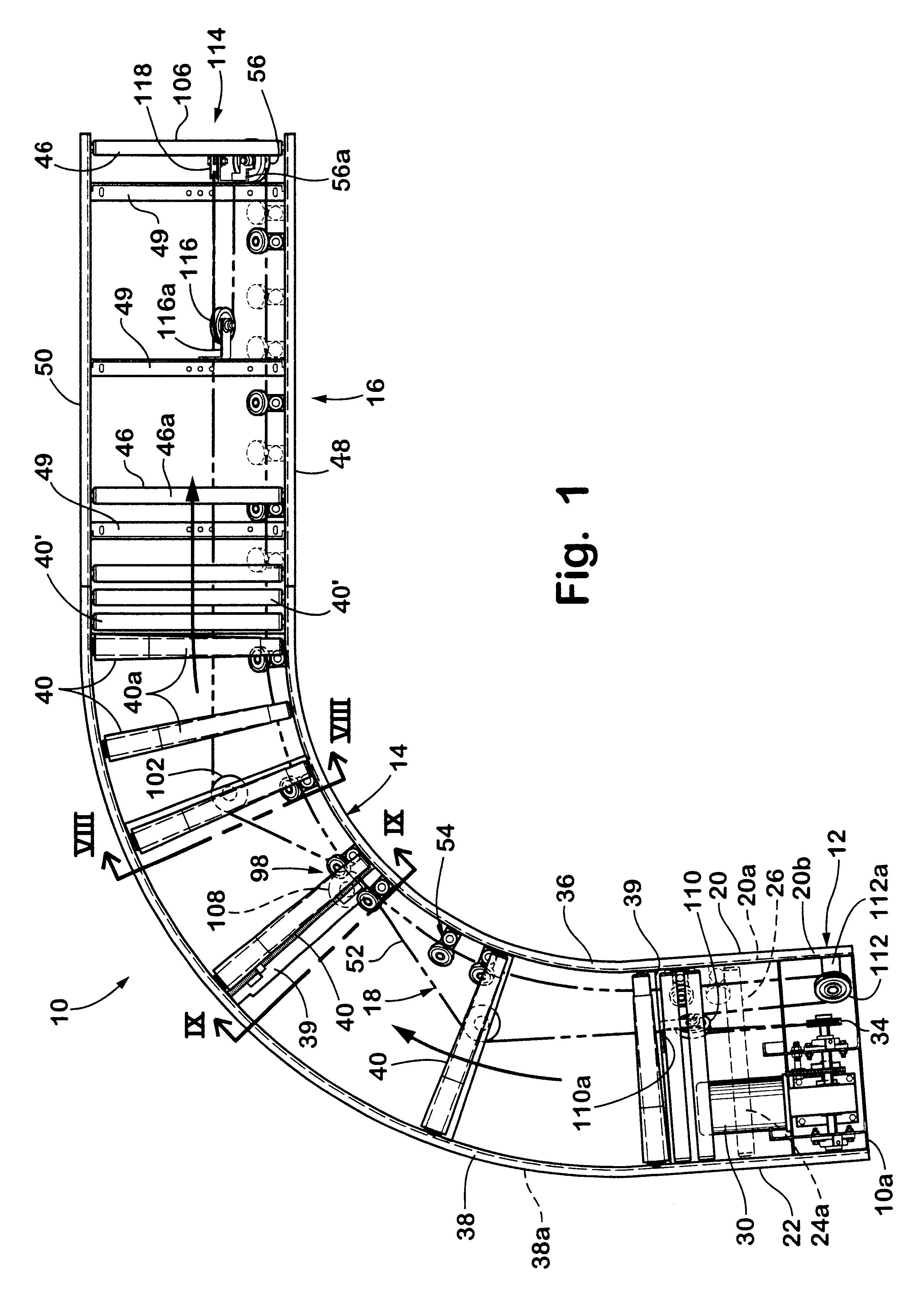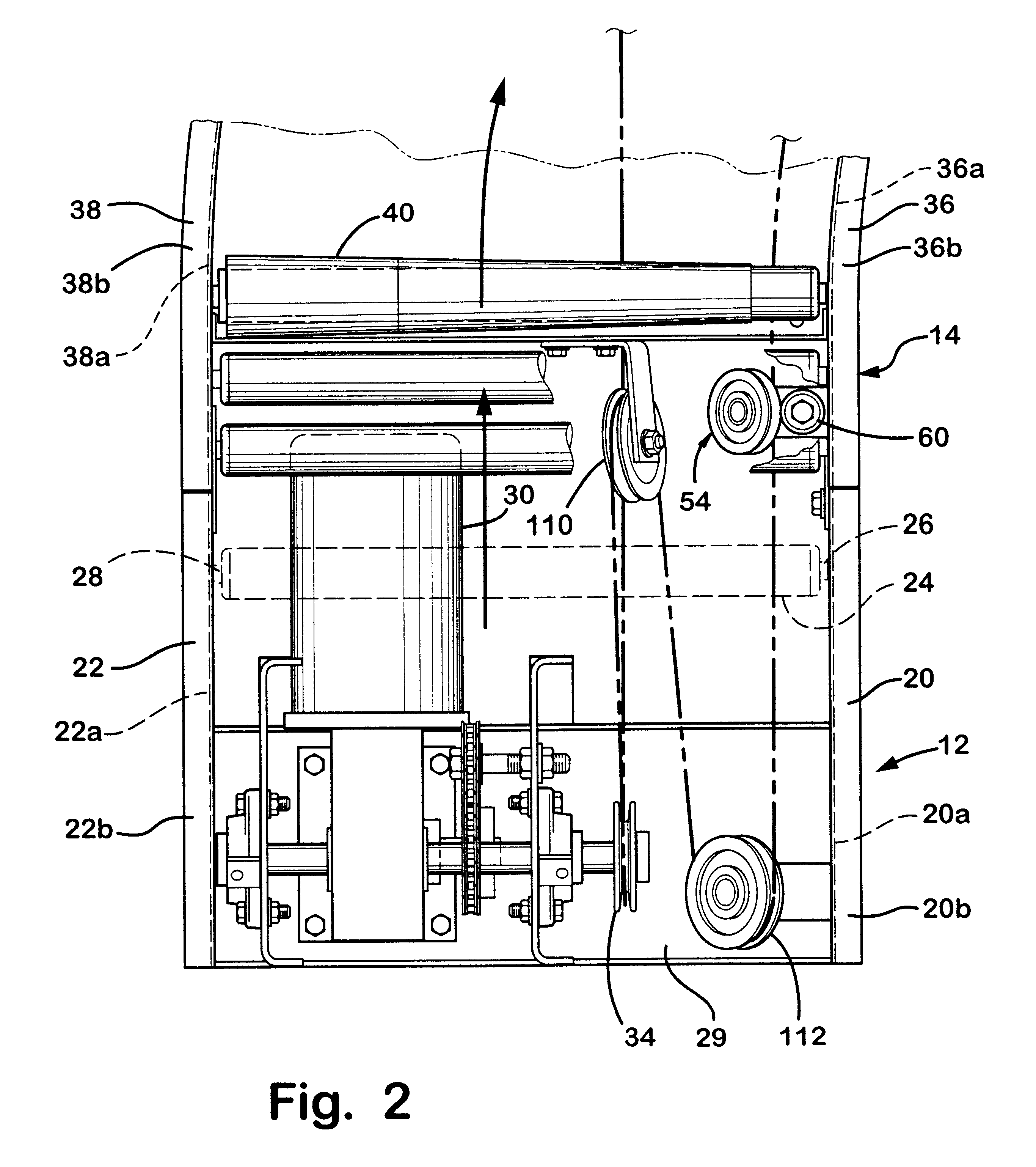Belt driven roller conveyor
a belt drive and roller conveyor technology, applied in the direction of roller-ways, transportation and packaging, etc., can solve the problems of belt cord breakage, limited length of round closed loop belts, and the need for partial disassembly of the replacement bel
- Summary
- Abstract
- Description
- Claims
- Application Information
AI Technical Summary
Benefits of technology
Problems solved by technology
Method used
Image
Examples
second embodiment
Referring to FIGS. 13-19, belt 152 is illustrated. Similar to belt 52, belt 152 includes a base 164, a rounded upper or outer sure 170 and a driving edge 172. As best seen in FIG. 15, edge 172 is offset from belt axis of symmetry 154a and provides a continuous linear driving surface for driving the rollers. Preferably, edge 172 is offset at an angle of 35 to 45 degrees from surface 170 and, most preferably, about 40 degrees. In is embodiment, belt 152 comprises a link belt configuration and includes a plurality of link members 154. Each link member 154 includes a body portion 156 and a connector portion 158 which projects from body portion 156 for coupling link member 154 to second and third link members 154' and 154". It should be understood from FIGS. 13-15, each link of link belt 152 couples to second and third links except the last link which couples to ate first and second links to create a desired length of closed loop belt 152. Body portion 156 includes first and second elong...
first embodiment
While several forms of the invention have been shown and described, other forms will now be apparent to those skilled in the art. For example, other drive arrangements may be used to drive the belts preferably in a manner that maintains the orientation of the belt to minimize twisting. In addition, as mentioned in reference to the first embodiment, the conveyor sections may have other frame configurations. Furthermore, on the straight runs of the junction conveyor section one or more lateral restraints may be omitted from the spring pulley assemblies. Moreover, the general mounting details and configurations may be varied as desired without departing from the scope of the invention. The embodiments of the invention shown in the drawings are not intended to limit the scope of the invention which is defined by the claims which follow.
PUM
 Login to View More
Login to View More Abstract
Description
Claims
Application Information
 Login to View More
Login to View More - R&D
- Intellectual Property
- Life Sciences
- Materials
- Tech Scout
- Unparalleled Data Quality
- Higher Quality Content
- 60% Fewer Hallucinations
Browse by: Latest US Patents, China's latest patents, Technical Efficacy Thesaurus, Application Domain, Technology Topic, Popular Technical Reports.
© 2025 PatSnap. All rights reserved.Legal|Privacy policy|Modern Slavery Act Transparency Statement|Sitemap|About US| Contact US: help@patsnap.com



